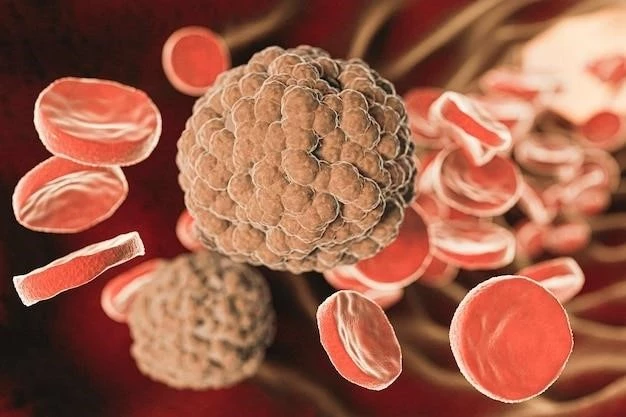Hereditary Ceroid Lipofuscinosis
Hereditary ceroid lipofuscinosis is a rare genetic disorder characterized by the accumulation of lipofuscin. This article will explore the pathophysiology, clinical manifestations, diagnosis, genetic testing, treatment options, and impact on patients and families.
Introduction to Hereditary Ceroid Lipofuscinosis
Hereditary ceroid lipofuscinosis, also known as neuronal ceroid lipofuscinosis, is a group of neurodegenerative lysosomal storage disorders. These disorders result in the accumulation of lipofuscin, a fatty substance, in cells throughout the body. There are several forms of the disease, each caused by mutations in different genes.
Individuals affected by hereditary ceroid lipofuscinosis typically experience cognitive decline, vision loss, motor impairment, and other neurological symptoms. The age of onset and progression of the disease vary depending on the specific type of ceroid lipofuscinosis.
Due to the progressive nature of the disorder, early diagnosis and intervention are crucial. Genetic testing plays a significant role in identifying the specific genetic mutations responsible for ceroid lipofuscinosis. This information is essential for providing appropriate medical care and genetic counseling.
While there is currently no cure for hereditary ceroid lipofuscinosis, treatment options such as enzyme replacement therapy may help manage certain symptoms and improve quality of life for affected individuals. The impact of hereditary ceroid lipofuscinosis extends beyond the patients themselves, affecting their families and caregivers as well.
Understanding the complexities of hereditary ceroid lipofuscinosis is essential for healthcare professionals, researchers, and individuals impacted by the disease. This article aims to provide a comprehensive overview of this rare and debilitating disorder, shedding light on its clinical manifestations, diagnostic strategies, available treatments, and the challenges faced by patients and their loved ones.
Understanding the Pathophysiology of Hereditary Ceroid Lipofuscinosis
Hereditary ceroid lipofuscinosis is characterized by defects in lysosomal function, leading to the accumulation of lipofuscin in cells. Lipofuscin is a residue of lysosomal digestion that normally gets cleared out but accumulates in patients with ceroid lipofuscinosis. The buildup of lipofuscin in different tissues, including the brain, retina, and various organs, contributes to the progressive neurodegeneration seen in this disorder.
The specific genetic mutations associated with different forms of ceroid lipofuscinosis disrupt the normal function of enzymes involved in lysosomal processing, impairing the breakdown of cellular waste materials. This results in the formation of storage bodies containing lipofuscin and other substances that interfere with cellular processes critical for cell survival and function.
As the disease progresses, the accumulation of lipofuscin and other materials within cells leads to cell death, particularly affecting neuronal cells in the brain. This neuronal loss is responsible for the cognitive decline, vision loss, and motor impairment observed in individuals with hereditary ceroid lipofuscinosis.
Understanding the pathophysiology of hereditary ceroid lipofuscinosis is crucial for developing targeted therapies aimed at restoring lysosomal function, reducing the accumulation of lipofuscin, and slowing the progression of neurodegeneration. Research efforts focused on elucidating the underlying mechanisms of the disease may pave the way for innovative treatment strategies to improve the outcomes and quality of life for individuals affected by this rare disorder.
Clinical Manifestations of Hereditary Ceroid Lipofuscinosis
Individuals with hereditary ceroid lipofuscinosis present with a spectrum of clinical manifestations that reflect the progressive multisystem impact of the disorder. Common symptoms include cognitive decline, vision loss, motor impairment, seizures, and behavioral changes. The age of onset and severity of symptoms vary depending on the specific subtype of ceroid lipofuscinosis.
Cognitive decline is a hallmark feature of ceroid lipofuscinosis, leading to impairments in memory, learning, and executive function; Vision loss, often starting with night blindness and progressing to complete blindness, results from the accumulation of lipofuscin in the retinal cells. Motor impairment, including muscle weakness, coordination difficulties, and tremors, can significantly impact mobility and activities of daily living.
Seizures are another frequent symptom observed in some forms of hereditary ceroid lipofuscinosis, further complicating the clinical course of the disease. Behavioral changes, such as aggression, irritability, and psychosis, may also manifest in affected individuals, adding to the challenges faced by patients and caregivers.
As hereditary ceroid lipofuscinosis progresses, individuals may experience increased dependence on others for daily tasks, loss of communication abilities, and a decline in overall quality of life. The complex interplay of neurological symptoms underscores the profound impact of this rare disease on both physical and cognitive functions.
Recognizing the diverse clinical manifestations of hereditary ceroid lipofuscinosis is essential for healthcare professionals to provide comprehensive care and support to patients and their families. Through early detection and symptom management, efforts can be made to enhance the well-being and quality of life of individuals living with this challenging neurodegenerative disorder.
Diagnosis and Genetic Testing for Hereditary Ceroid Lipofuscinosis
Diagnosing hereditary ceroid lipofuscinosis involves a comprehensive evaluation of the patient’s clinical symptoms, family history, and specialized tests to confirm the suspected diagnosis. Imaging studies, such as MRI scans, may reveal characteristic changes in the brain associated with the disease.
Genetic testing plays a crucial role in confirming the diagnosis of hereditary ceroid lipofuscinosis by identifying specific mutations in the genes known to cause the disorder. This information is essential for determining the appropriate subtype of ceroid lipofuscinosis and guiding treatment decisions and genetic counseling.
Various genetic testing methods, including sequencing techniques and molecular analysis, are employed to detect mutations in the affected genes associated with ceroid lipofuscinosis. Understanding the genetic basis of the disease enables healthcare providers to offer personalized care and management strategies tailored to the individual’s specific genetic profile.
In cases where a family history of ceroid lipofuscinosis exists, genetic testing may also be recommended for at-risk family members to assess their carrier status or likelihood of developing the condition. Genetic counseling services can help individuals and families understand the implications of genetic test results and make informed decisions regarding family planning and future healthcare needs.
Early and accurate diagnosis through genetic testing is essential for initiating appropriate interventions and support services for individuals affected by hereditary ceroid lipofuscinosis. By leveraging advancements in genetic technology, healthcare professionals can enhance diagnostic precision, improve prognostic accuracy, and streamline the delivery of targeted care for patients impacted by this rare lysosomal storage disorder.

Treatment Options for Hereditary Ceroid Lipofuscinosis
Currently, the management of hereditary ceroid lipofuscinosis focuses on symptomatic and supportive care to address the diverse clinical manifestations of the disorder. While there is no definitive cure for ceroid lipofuscinosis, various treatment approaches aim to alleviate symptoms, improve quality of life, and slow disease progression.
One of the treatment modalities for ceroid lipofuscinosis is enzyme replacement therapy, which involves administering artificial enzymes to replace the deficient or dysfunctional enzymes responsible for lysosomal storage. This approach can help reduce the accumulation of lipofuscin and other cellular waste products, potentially mitigating some disease symptoms.
Supportive therapies play a crucial role in managing the neurological and physical symptoms associated with hereditary ceroid lipofuscinosis. Physical therapy, occupational therapy, and speech therapy can help maintain mobility, enhance communication skills, and address cognitive impairments, promoting functional independence and quality of life.
Seizures, a common symptom in certain forms of ceroid lipofuscinosis, may be managed with antiepileptic medications to control seizure activity and reduce the risk of complications. Additionally, behavioral interventions and psychosocial support can assist individuals and their families in coping with the emotional and psychological challenges of living with a neurodegenerative disorder.
Research into novel therapeutic strategies, including gene therapy and small molecule drug development, is ongoing in the field of ceroid lipofuscinosis. These innovative approaches hold promise for targeted interventions that address the underlying genetic defects and mechanisms of the disease, potentially offering new avenues for disease-modifying treatments in the future.
While managing hereditary ceroid lipofuscinosis poses significant challenges, a multidisciplinary approach that combines medical management, supportive care, and ongoing research efforts is essential for optimizing outcomes and enhancing the well-being of individuals affected by this rare and debilitating lysosomal storage disorder.
Impact on Patients and Families
Hereditary ceroid lipofuscinosis exerts a profound impact on both patients and their families, necessitating comprehensive support and care. The progressive nature of the disease and the complex array of symptoms it presents can significantly affect the physical, cognitive, and emotional well-being of individuals living with ceroid lipofuscinosis.
For patients, the cognitive decline, vision loss, motor impairment, and other neurological symptoms associated with ceroid lipofuscinosis can lead to challenges in daily functioning, social interactions, and overall quality of life. These individuals may require increasing levels of assistance and specialized care as the disease advances, impacting their independence and autonomy.
The psychological toll of hereditary ceroid lipofuscinosis extends to the emotional health of patients and their families. Coping with the uncertainties surrounding the progression of the disease, managing the complex care needs, and navigating the financial and logistical aspects of treatment can place a significant burden on caregivers and loved ones.
Families of individuals with ceroid lipofuscinosis often experience heightened levels of stress, grief, and caregiver fatigue as they strive to provide the necessary support and advocacy for their affected family member. Access to counseling services, respite care, and community resources is critical in helping families navigate the challenges posed by this rare genetic disorder.
Educating both patients and families about hereditary ceroid lipofuscinosis, its symptoms, treatment options, and available support services is essential for promoting informed decision-making and enhancing overall coping strategies. Building a strong network of healthcare providers, social services, and support groups can offer a valuable source of guidance and assistance for individuals facing the complexities of ceroid lipofuscinosis.
By acknowledging the far-reaching impact of hereditary ceroid lipofuscinosis on patients and families, healthcare professionals can tailor their care approaches to address not only the medical needs but also the psychosocial and emotional well-being of those affected by this challenging neurodegenerative disorder.
Hereditary ceroid lipofuscinosis represents a group of rare genetic disorders characterized by the accumulation of lipofuscin in cells, leading to progressive neurodegeneration and a range of debilitating symptoms. The complexity of ceroid lipofuscinosis necessitates a multidisciplinary approach to diagnosis, treatment, and support.
Advances in genetic testing have enabled healthcare providers to identify specific mutations associated with ceroid lipofuscinosis, facilitating early diagnosis and personalized management strategies. While enzyme replacement therapy and supportive care interventions can help alleviate symptoms and improve quality of life, ongoing research into novel therapeutic approaches holds promise for future treatment breakthroughs.
The clinical manifestations of ceroid lipofuscinosis, including cognitive decline, vision loss, and motor impairment, have far-reaching effects on patients and their families. The emotional and psychological burden imposed by the disease underscores the importance of comprehensive support services, genetic counseling, and mental health resources for affected individuals and caregivers.
By raising awareness about hereditary ceroid lipofuscinosis, promoting early diagnosis, and fostering collaborative care efforts, healthcare professionals can make a meaningful difference in the lives of those impacted by this challenging lysosomal storage disorder. A holistic approach that encompasses medical, social, and emotional aspects is essential for addressing the unique needs of patients with ceroid lipofuscinosis and enhancing their quality of life.
As research continues to expand our understanding of the pathophysiology and treatment options for hereditary ceroid lipofuscinosis, there is hope for improved outcomes and innovative therapies that may transform the landscape of care for individuals living with this rare genetic condition. By uniting efforts across disciplines and advocating for patient-centered care, we can strive towards better outcomes and enhanced support for those affected by hereditary ceroid lipofuscinosis.
